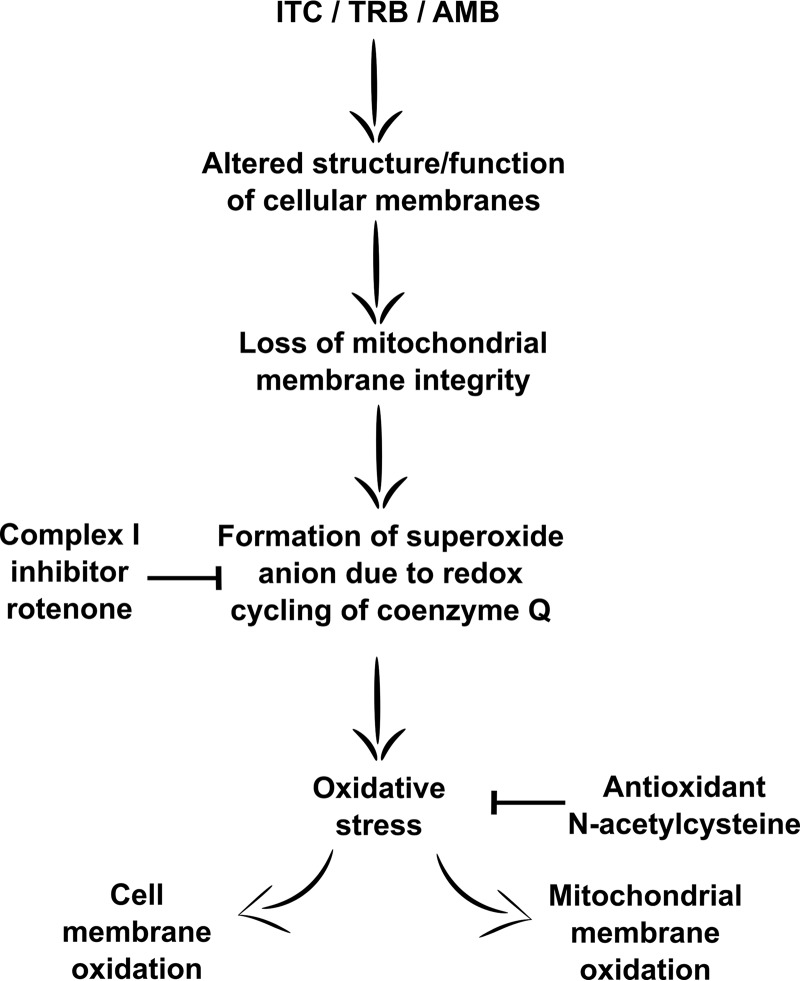FIG 7.
Schematic model of antifungal drug-induced oxidative stress in A. fumigatus. Inhibition of ergosterol biosynthesis by itraconazole or terbinafine, as well as pore formation by amphotericin B, alters the structure and function of cellular membranes and, in particular, results in a loss of mitochondrial membrane integrity. Changes in mitochondrial membrane properties may create conditions that promote a formation of superoxide anion due to redox cycling of coenzyme Q. Superoxide anion converted into hydrogen peroxide and other oxidative species contributes to oxidative damage of cell and mitochondrial membrane. Complex I inhibitor rotenone decreases the electron transfer to coenzyme Q that presumably reduces the redox cycling of coenzyme Q and thus reduces the release of mitochondrial ROS and subsequent oxidative stress. The antioxidant N-acetylcysteine abolishes oxidative stress caused by cell membrane-targeting antifungal drugs.

